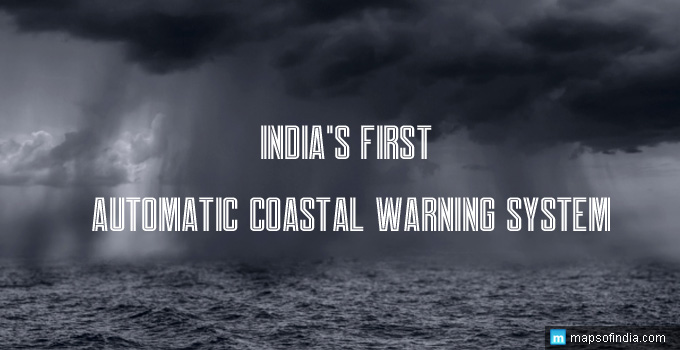India being considered as a country prone to natural disaster, it is very essential for our country to have the necessary device for a pre-warning to a natural calamity so that all relevant measures can be taken for its prevention. Odhisa is one of the many states of our country who is known to be affected by multiple natural hazards. Being situated on the coastline of Bay of Bengal, Odhisa is prone to drought, floods, tropical cyclones, storm surges, tsunamis, hailstorm and other calamities. The good news is that very soon, from the month of July onwards, Odhisa will be the first state in the country to have its first automatic coastal warning for disaster. Odhisa’s entire population residing on the 480 km length coastline will receive a pre-warning siren in the event of the occurrence of natural disasters like a tsunami or cyclone.
Early Warning Dissemination System (EWDS)
The system by which a pre-warning is given and which is going to be installed by the state government by next month is the Early Warning Dissemination System (EWDS), wherein loud sirens will go off simultaneously from high towers at 122 locations. This will be possible with the pressing of single button from a control room in Odhisa’s state capital Bhubaneswar. This is the first of its kind automatic public address system in the country which will be activated as soon as there is a sign of a natural calamity along the entire coastline of the state.
Districts to be covered
Initially, the plan is to install towers with EWDS in 22 blocks under six coastal districts. The sirens will be installed in 122 towers at various locations across the state, which also include fish landing centers, coastal habitations, tourist destinations etc. The 6 districts are:
- Balasore
- Bhadrak
- Ganjam
- Jagatsinghpur
- Kendrapara and
- Puri
Cost of the project
The project will be implemented with assistance from the World Bank at an estimated cost of Rs 82 crores.
How will the EWDS work?
- The EWDS comprises certain devices inbuilt into it like as Digital Mobile Radio (DMR), Satellite-Based Mobile Data Voice Terminals (SBMDVT), Mass Messaging System (MMS) and Universal Communication Interface (UCI) which help in inter-operability among different communication technologies.
- Whenever, there will be a slightest hint of a tsunami or cyclone or any other natural calamity, warning can be spread to the entire state just by the press of a button from the control room in Bhubeneswar.
- With the press of the button, loud sirens will go off at the same time and the sound can be heard in localities to a radius of 1.5 km.
- With this pre-warning, the EWDS will help the people to move to safer places. All these can be initiated before government agencies start evacuation.
Conclusion
There is no doubt about the fact that such an automatic coastal warning for disasters will be of great help to the people of Odhisa as the state is vulnerable to natural disasters. Reportedly, Andhra Pradesh is also developing such a system to pre-warn people in case of natural calamities. If all the states in the country come up with such a device and if it really works, we can be rest assured that our country won’t suffer much damage in lives and properties from the natural hazards.




